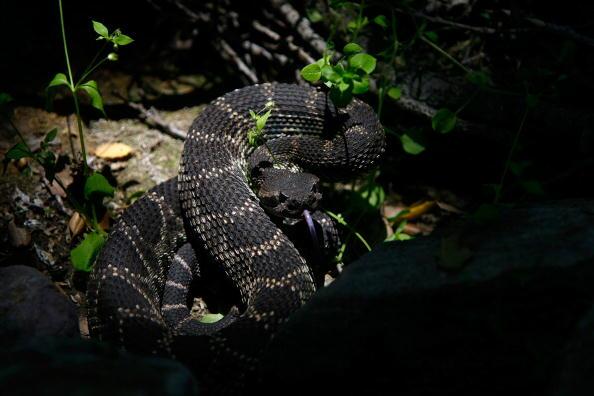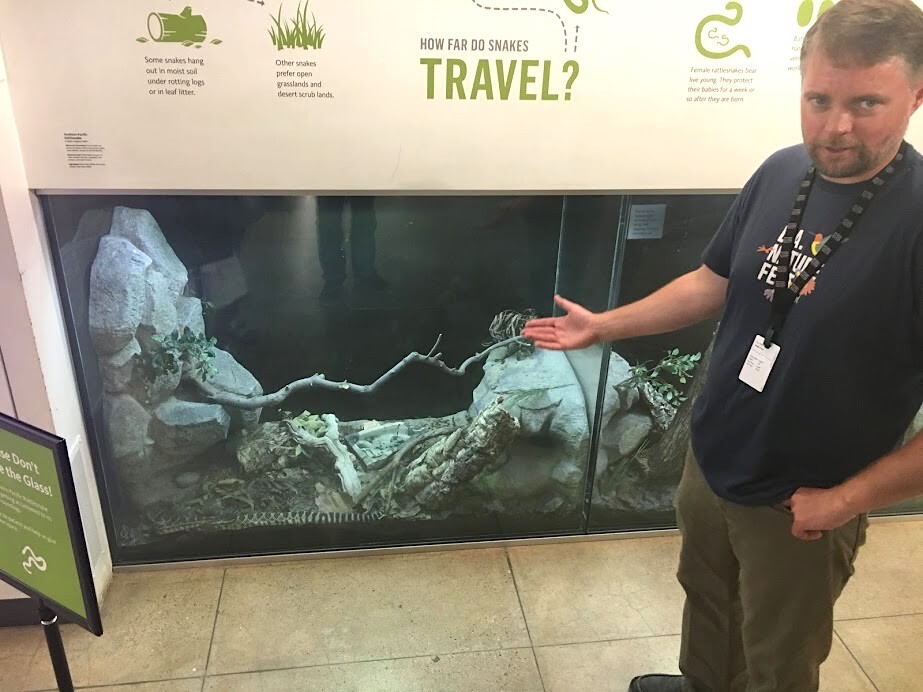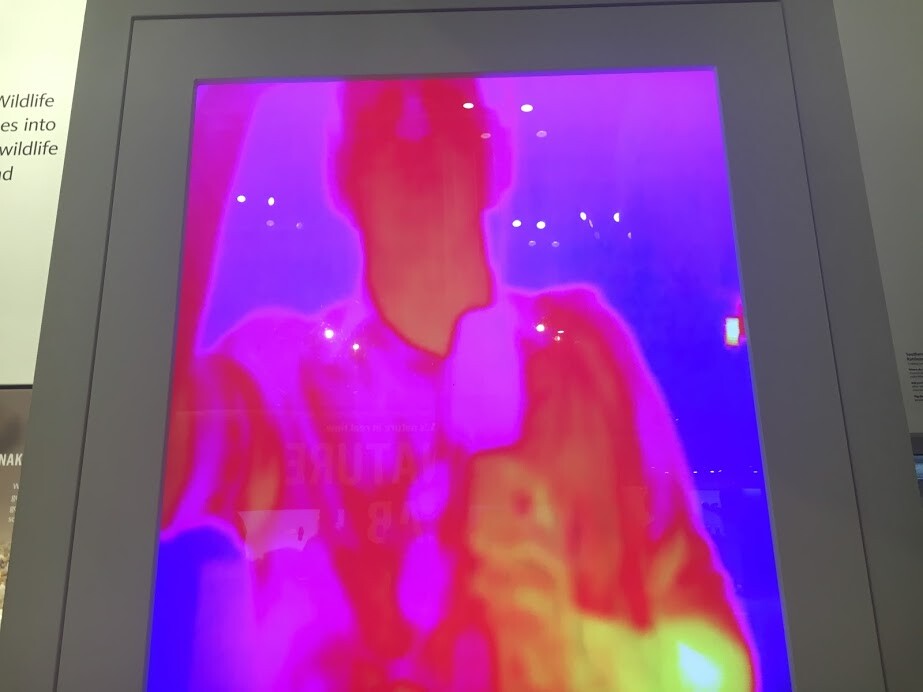Lawmakers prepare for Monday's cap-and-trade vote, Southern California snake population increases post-drought, the Ford Amphitheatre finishes a multi-million dollar renovation.
State of Affairs: Gov. Brown's big pitch to lawmakers as cap-and-trade vote looms
California Governor Jerry Brown told Sacramento lawmakers on Thursday the upcoming cap-and-trade extension will be the "most important vote of your life."
Brown is spending a lot of political capital to push through a package of environmental legislation, which would include preserving past 2020 his signature legislation to curb greenhouse gas emissions by California businesses. The vote has already been delayed once. It's now scheduled for Monday. Meanwhile, state lawmakers are looking to use the cap-and-trade deal as their opportunity to strike a compromise on affordable housing.
Plus, California's Attorney General is vowing to defend Dreamers from deportation. Xavier Becerra could even find himself in an unlikely alliance with the Trump administration to protect DACA.
It's all in this week's State of Affairs, our weekly look at politics in the Golden State.
GUESTS:
Sherry Bebitch Jeffe, professor of Public Policy at USC
Carla Marinucci, Senior Editor for Politico's California Playbook
Please click on the blue media player above to hear the full segment.
LA has big plans for self-driving cars
Cars that can drive by themselves will start showing up on L.A. roads by the end of the decade, so what's L.A. doing to prepare for it? We reached out to Seleta Reynolds, general manager of the Los Angeles Department of Transportation, for answers.
The robo cars are coming... "If you just had autonomous vehicles show up all by themselves, they actually make things measurably worse. When you remove the friction of driving, then you could re-incentivize urban sprawl, long trips. They increase vehicle miles traveled for folks, so we have to be really, really thoughtful about how they come into our city."
First steps... "It’s actually sort of wonky stuff like paying close attention to regulations -- making sure that the city still gets to have some input and control over when and where that happens. Identfiying what we call proving grounds, so places in the city and the county where we want auto manufacturers to test their autonomous vehicles because that will allow us to learn together. We’re early days right now and I think the first thing to do is really create a framework for testing and deployment and also get the public policy right and get the regulation right."
No more parking lots ... "One of the potential outcomes if we move to a world where you’re getting a shared vehicle in an autonomous taxi or even a shared ride in a 15-person shuttle is that we maybe don’t need as much land for parking. We have 200 square miles in LA County devoted to parking. When you think about all of the other things that we need that land for — parks, schools, housing to name a few — it seems like a pretty poor use of space to store dormant private vehicles."
Two-way traffic signals... "We have one of the largest, most sophisticated interconnected signal systems in North America. Every single one of our signals is connected to a traffic management center downtown. Right now it’s very much a one-way communication loop. We pull in data from sensors and cameras in order to operate the system. What happens when we can start pushing data out to give a transit driver predictive speed, so if you go 25 mph, you can get a green light. And then what happens when we can push that out more broadly to a fleet of vehicles."
Changeable infrastructure ... "If we are able to get this envisioned future where we don’t need as many vehicles to move people and we can do it in more of a shared public transit light way, then maybe you don’t need five lanes of traffic 24 hours a day, and if I can immediately push to the fleet that I need to close a street between the hours of 10 and 2 so that I can create a pop-up playground, that’s an opportunity too be thinking: How can we create more changeable infrastructure."
Charging money for curb space... "Curb space is one of the most valuable pieces of assets that we have, that we could manage and price differently in the future. For example, if you want to deliver something in the middle of the day i downtown LA, maybe it costs you a lot more than if you do that in the middle of the night. Similarly if you want to use a bus stop red zone, maybe there’s a pathway for you to pay for that if you are a private transit provider and you meet certain criteria that the city sets. So inventorying, managing and pricing curb space is another way we’re thinking about infrastructure."
No Place Like LA: David, au revoir Paris et bonjour Los Angeles
No Place Like LA is our series that asks transplants and immigrants to LA, "When was the moment you felt that Los Angeles was truly home?"
This is David Jourdan's story.
I'm from Paris, originally, and I moved to Los Angeles in the summer of 1999.
Paris is a beautiful city. A lot of people are like, "Oh, you're from Paris!"
I guess the first moment I truly felt like L.A. was home was after the first visit back to Paris.
I flew back to L.A., came out the terminal at LAX and saw the skies, the air, the palm trees.
When you don't have that blue sky and palm trees anymore, that's when you realize how an essential part of your well-being and your life it is when you live here.
L.A. is a vibe, it's a lifestyle. It's freedom.
What's your story? Tell us at No Place Like LA.
5 tips for camping during wildfire season
Many Southern Californians are camping this summer, but unfortunately, prime camping season is also prime wildfire season.
This summer, several fires have ravaged popular camping areas. The Whittier Fire recently forced nearly three thousand campers in the Lake Cachuma region to evacuate their campsites.
So how can people stay safe, and be mindful of fire threat while camping?
Andrew Madsen, public affairs officer for Los Padres National Forest, provided some tips for camping during wildfire season.
1. Call ahead before you go.
"We always encourage visitors to know before you go - if you're going to an area that you're not as familiar with, make contact with the local ranger station ahead of time.
Be familiar with what the weather forecast is calling for... [Wildfires] are always a risk and so folks should be aware that based on weather conditions, extreme heat, and winds that the possibility of a wildfire is always present."
2. Visit a region you're familiar with.
"Knowing some history of the area is key so if you're going to a place that you've been in the past then you might know some of the fire history in the area, [such as] are you going during a time when that particular area tends to experience fire starts? This comes into play when you're trying to figure out where you want to go, and what time you want to go, and maybe deciding not to go if conditions indicate extreme fire weather is on the way."
3. Check on which fire restrictions are in effect.
The Forest Service implements specific fire restriction levels based on the current wildfire threat. If you're camping during fire season, you could be visiting during a Level 2 or Level 3 restriction phase.
"[Fire restrictions] are typically based on the level of moisture that's in the vegetation, or what we call fuel, so when the fuel moisture levels drop below a certain percentage, that triggers our restrictions... Level 2 prohibits dispersed campfires, for instance in the backcountry. If the fuel moisture dips even lower we'll go to level 3, which then prohibits campfires even inside the campgrounds and fire rings."
4. Get a campfire permit.
"Everyone who has an open fire needs to have a valid California Fire campfire permit on their person when they are having the fire. Those can be downloaded online, or you can go into any ranger district office and get one."
5. And of course, practice general fire safety.
"Just be very aware of your conditions while you're out there. . . We generally encourage people to have a responsible person at all times monitoring the fire, have a shovel and a pail of water close by, and make sure that your campfire is completely extinguished."
To listen to the full segment, click the blue play button above.
Snakes on a plain: Post-drought serpents are fat, happy, and making babies
For about five years, Southern California's drought-afflicted snakes have been looking a bit lean.
"If you were finding snakes three, four years ago, the body condition of those snakes was really poor," says Greg Pauly, curator of reptiles and amphibians at the Natural History Museum of Los Angeles County. "You might see a snake that's three feet long but incredibly underweight because they just weren't eating very much," he says.
Pauly says skinny snakes are a byproduct of our five-year-long drought. The water shortage rippled through the animal kingdom, hitting our resident snakes hard.
Consider the Southern Pacific Rattlesnake — one of SoCal's most common snakes.

As water became scarce, so too did their favorite nosh: small lizards, and little mammals.
"These female snakes didn't have the energy reserves to produce a clutch of young," Pauly says. "They just have not been reproducing for several years."
Rattlesnakes weren't the only ones forced to tighten their little belts. Their less-lethal neighbors faced hardship too: gopher snakes, striped racers, California Kingsnakes.
Pauly says that it's not clear whether the drought caused snakes to stop trying to make babies entirely, whether female snakes couldn't sustain gestation or both.

The prospect of fewer snakes might be enough to make some amateur hikers (and rodents) cheer — but don't celebrate just yet. The drought was declared officially over in April, and Pauly says things could turn around soon.
"You look at snakes right now after this excellent winter and spring, and they are just looking fat and happy," he says. "I think we'll start to see some really good reproduction this year. Late summer, early fall, we'll start to see baby snakes cruising around the landscape."
Going into the next few months, the reptile expert has some tips for your next hike — especially in the hills of Santa Monica or the San Gabriels:
"If you're out and you're wandering around, be listening, Pauly says. Rattlesnakes are very polite snakes. If you're too close, they'll let you know by giving a rattle."
Protip from Pauly: Snakes don't chase people.
Press the blue play button above to hear the feature.

Inside the century-old Ford Theatre's $72 million renovation
For nearly a century, the John Anson Ford Amphitheatre — aka the Ford Theatre — has entertained thousands from its stage nestled in the Hollywood Hills. Built in 1920, it's one of the oldest venues in the city.
In the decades since its opening, programs have ranged from religious to rock. The best may be yet to come for the Ford — the amphitheater recently underwent a $72 million restoration and modernization.
To find out more, Take Two's A Martinez ventured out to meet with the two people who made it happen: architect Brenda Levin and Ford executive director Olga Garay-English.
Interview highlights
How did the Ford Theatre come to be?
Olga: It was started in 1920 by a very rich woman who was a playwright. She put a group of people together and wrote what's called "the Pilgrimage Play." They needed a place to perform, and so she purchased not only this land, but the land that the Hollywood Bowl is on.

Was the theater built a certain way to give people that feel?
Olga: Absolutely. The towers that you see here have a Judaic feel to them. The backstage, the use of the rocks and the verdant landscaping were meant to evoke the time of Jesus in that kind of climate.

It's right across the way from the Hollywood Bowl. I think a lot of people just go there and don't think of the Ford too much.
Olga: I think it's a very different experience in the Bowl. The Bowl is fabulous, but the Bowl seats 18,000 people. We seat 1,200 people. Instead of looking at big screens, you're looking at an artist's eyes, and you get a completely different visceral experience when you see an artist at the Ford Theatre than you do at the Bowl. There's no bad seat in the house.

Brenda, you were in charge of renovating and restoring this place. What was your mindset going in?
Brenda: I think it's a combination of renovation and reconstruction. For the performers themselves, much was focused on the stage. It's now a beautiful stage and is approximately the same size, but it is a much more hospitable surface for all types of performances.
In addition, the technology of the theater was important. None of that has been improved over the years. Much of the focus was on the infrastructure for technology. You're looking at all new theatrical lighting and audio-visual systems.

Brenda, one tidbit that I found interesting: Earlier in your career, you worked for famed architect John Lautner. He studied under one of the most famous architects of all time: Frank Lloyd Wright. People who know about Frank Lloyd Wright know that he is big on organic architecture — harmony between structures and nature. It seems as if that idea is alive and well here at the Ford.
It very much so is. I think what you've just noticed is what is unique about the Ford, which is that you are set in a canyon, you are surrounded by nature, and that you are looking at performers who are set in nature as well.
Most other amphitheaters across the country, and — of course — the Hollywood Bowl across the freeway, the audience is looking at a shell of some kind. The shell is providing some of that acoustic balance. At the Ford, you are absorbed in nature, and the built architecture is behind you. They're separating you from 21st century Los Angeles.

Press the blue play button about to hear the full virtual tour.
Answers have been edited for clarity and brevity.




